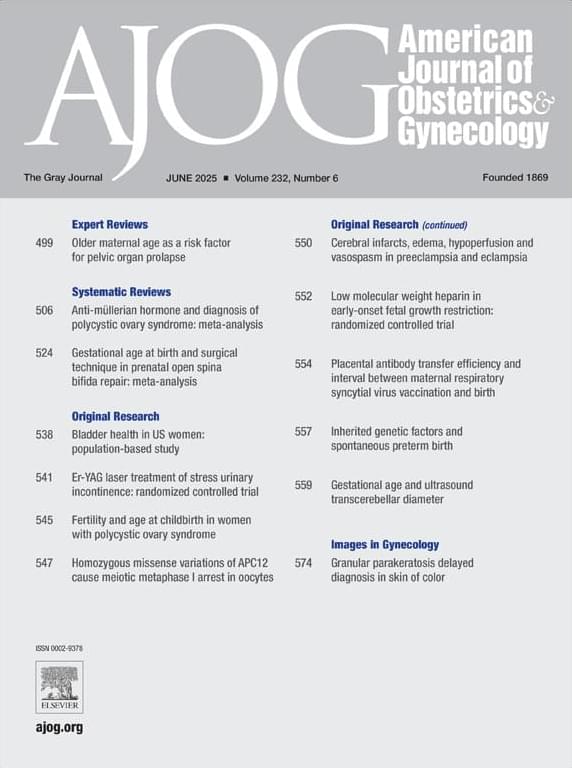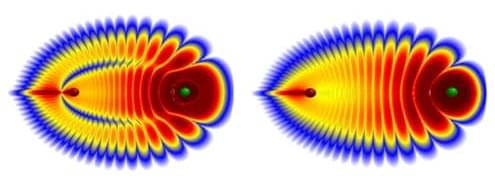Mucosal-associated invariant T (MAIT) cells are innate-like T cells defined by their semi-invariant T cell receptor (TCR) and restriction by the MHC class I-related molecule (MR1). These cells are pr…
A team of physicists from the University at Albany has proposed scientifically rigorous methods for documenting and analyzing Unidentified Anomalous Phenomena (UAP) building upon the work of numerous past and present researchers in the field.
The team tested their methods in the field for the first time and reported their findings in Progress in Aerospace Sciences.
UAP is the term used by government agencies like NASA to refer to “observations of events in the sky that cannot be identified as aircraft or known natural phenomena.”
Scientists at the Institute for Basic Science (IBS) have uncovered a non-invasive method to boost the brain’s natural waste drainage system—a discovery that could open new avenues for tackling age-related neurological disorders.
In a study published in Nature, researchers from the IBS Center for Vascular Research, led by Director Koh Gou Young, along with senior researchers Jin Hokyung, Yoon Jin-Hui, and principal researcher Hong Seon Pyo, demonstrate that precisely stimulating the lymphatics under skin on the neck and face can significantly enhance the flow of cerebrospinal fluid (CSF)—the liquid that cushions the brain and helps remove toxic waste —through lymphatic vessels.
This offers a new approach to clearing brain waste using safe, non-invasive mechanical stimulation, rather than relying on drugs or surgical interventions.
New research has overturned a long-held belief in neuroscience by showing that the brain uses separate synaptic transmission sites for spontaneous and evoked signaling.
Eclampsia is a serious pregnancy complication and is associated with cerebral edema and infarctions. However, the underlying pathophysiology of eclampsia remains poorly explored.
High-precision spectroscopy of weakly bound rubidium dimers pushes a theoretical model to its limits.
A new model captures how impurities affect jets formed when bubbles rise and pop at a liquid surface.
A new framework for studying chiral materials puts the emphasis on electron chirality rather than on the asymmetry of the atomic structure.
Chirality is a fundamental feature of nature, manifesting across scales—from elementary particles and molecules to biological organisms and galaxy formation. An object is considered chiral if it cannot be superimposed on its mirror image. In condensed-matter physics, chirality is primarily viewed as a structural asymmetry in the spatial arrangement of atoms within a crystal lattice [1]. A perhaps less familiar fact is that chirality is also a fundamental quantum property of individual electron states [2]. Now, Tatsuya Miki from Saitama University in Japan and colleagues introduce electron chirality as a framework to quantify symmetry breaking in solids, focusing on chiral and related axial materials [3]. The researchers propose a way of measuring electron chirality with photoemission spectroscopy.
A project led by the University of Melbourne’s Dr. Manjith Bose and Professor Jeff McCallum, who are also members of the ARC Center of Excellence for Quantum Computation and Communication Technology, has identified a promising class of superconductors that may potentially avoid the need for high levels of cryogenic cooling. These advanced materials can be manufactured, be integrable and be compatible using standard silicon and superconducting electronics approaches.
To optimize the growth of these silicide superconductors, Dr. Bose and Prof. McCallum are making extensive use of high–temperature neutron reflectometry on the Spatz reflectometer at ANSTO’s Australian Center for Neutron Scattering.
Neutrons are an ideal tool for exploring extreme sample environments, such as the high pressure, temperatures or fields that are present when manufacturing circuit elements. This is because neutrons can penetrate through most common metals, allowing one to see reflective thin films deep inside furnaces, magnets and cryo-chambers.
Astronomers from the University of Hawaiʻi’s Institute for Astronomy (IfA) have discovered the most energetic cosmic explosions yet discovered, naming the new class of events “extreme nuclear transients” (ENTs). These extraordinary phenomena occur when massive stars—at least three times heavier than our sun—are torn apart after wandering too close to a supermassive black hole. Their disruption releases vast amounts of energy visible across enormous distances.
The team’s findings appear in the journal Science Advances.
“We’ve observed stars getting ripped apart as tidal disruption events for over a decade, but these ENTs are different beasts, reaching brightnesses nearly ten times more than what we typically see,” said Jason Hinkle, who led the study as the final piece of his doctoral research at IfA. “Not only are ENTs far brighter than normal tidal disruption events, but they remain luminous for years, far surpassing the energy output of even the brightest known supernova explosions.”









